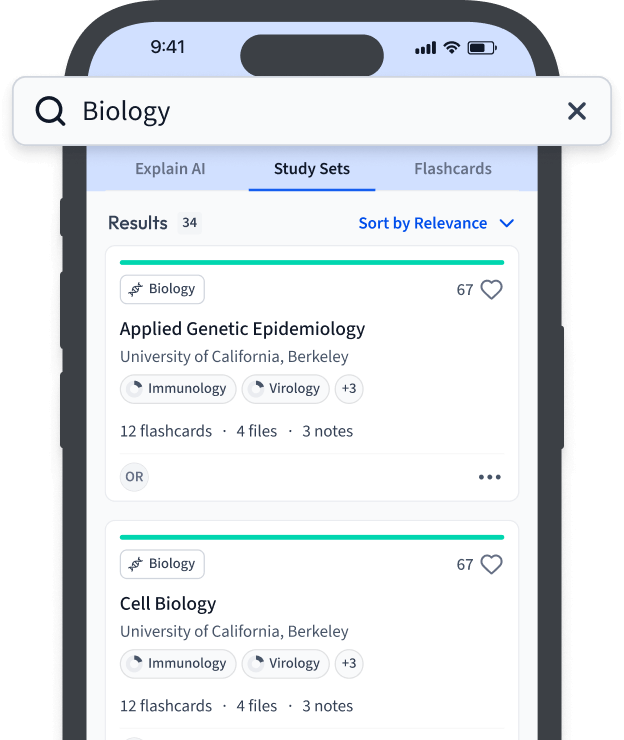Danke für dein Interesse an Audio-Lernen!
Die Funktion ist noch nicht ganz fertig, aber wir würden gerne wissen, warum du Audio-Lernen bevorzugst.
Warum bevorzugst du Audio-Lernen? (optional)
Feedback sendenUnderstanding Emulgatoren in Gastronomy
In the gastronomic world, understanding the role of various additives is crucial to achieving successful culinary creations. Emulgatoren, often found in foods, are key to this culinary science.
Was sind Emulgatoren
Emulgatoren are substances that help stabilize mixtures of oil and water, preventing them from separating. These ingredients are critical in creating smooth textures in products such as sauces, mayonnaise, and ice creams. Emulgatoren are essential in both cooking and commercial food production.
- They improve the consistency and stability of emulsions.
- Used in products like margarine, vinaigrettes, and desserts.
- Common examples include lecithin and mono- and diglycerides.
An emulgator is a substance that helps mix two immiscible liquids, such as oil and water, to create a stable emulsion.
Example: In making mayonnaise, lecithin acts as an emulgator, allowing the oil and water in the recipe to blend smoothly and retain a consistent texture.
Emulgatoren Funktion und Bedeutung
The primary function of emulgatoren is to stabilize emulsions, preventing the separation of ingredients. How do they achieve this? Emulgatoren possess both hydrophilic (water-attracting) and hydrophobic (water-repellent) properties. This allows them to reposition themselves between oil and water particles, thus facilitating a stable mixture.
| Function | Importance |
| Maintain uniformity in food products | Ensures consistent taste and texture |
| Prevent separation during processing | Reduces waste and extends shelf-life |
| Improve appearance | Enhances visual appeal of foods |
Did you know that without emulgatoren like lecithin, a simple task like creating a perfect vinaigrette would be challenging? Lecithin not only stabilizes the mixture but also adds nutritional benefits such as choline, which is vital for brain health. Emulgatoren go beyond aesthetics and functionality, offering nutritional value to the foods they help create.
Einsatz von Emulgatoren in der Küche
The use of emulgatoren in the kitchen is pivotal for creating a wide array of culinary delights, enhancing both taste and texture while ensuring stability of foods.
Praktische Anwendung von Emulgatoren in der Gastronomie
In gastronomy, emulgatoren perform essential roles that go beyond simple mixture stabilization. They are indispensable in modern cooking techniques, providing chefs with the capability to innovate and perfect their dishes.
- Emulgatoren are used to create stable and appealing sauces and dressings.
- They help in crafting smooth and creamy textures, especially in desserts and dairy products.
- In processed foods, emulgatoren extend shelf-life by retaining moisture and consistency.
By understanding and utilizing emulgatoren, culinary professionals can significantly enhance the quality and presentation of their food offerings.
Example: In gastronomy, using lecithin as an emulgator in a beurre blanc sauce helps maintain its creamy consistency, preventing it from breaking apart during serving.
Hint: Seize the opportunity to experiment with different emulgatoren in molecular gastronomy to create innovative textures that surprise the palate.
Emulgatoren Beispiele in der Küche
Various emulgatoren are frequently employed in the culinary world to meet specific needs. Understanding their properties allows chefs to choose the right emulgator for each dish.
| Emulgator | Common Uses |
| Lecithin | Used in chocolates and margarine for smoothness |
| Mono- and Diglycerides | Improve dough texture in baked goods |
| Soy Lecithin | Employed in non-stick cooking sprays |
With the right choice of emulgatoren, achieving the desired culinary results becomes an artful yet scientific endeavor.
While lecithin and soy lecithin are popular in kitchens for their emulsifying properties, they also offer a nutritional edge. Lecithin is a rich source of phospholipids, which play a vital role in cellular functions. Emulgatoren here not only stabilize, but also make food healthier.
Hint: Consider using soy lecithin in plant-based recipes for added nutritional benefits while maintaining desirable textures.
Emulgatoren in der Gastronomie Ausbildung
In the world of gastronomy, understanding the role of emulgatoren is a vital part of culinary education. These substances enhance the texture and stability of food items, making them indispensable in both traditional recipes and modern culinary practices.
Emulgatoren in der Ausbildung erklärt
During culinary training, students learn how to incorporate emulgatoren to improve the quality and presentation of their dishes. This knowledge is crucial for creating composite recipes that require a seamless blend of ingredients. Emulgatoren are particularly useful in the following areas:
- Creating stable emulsions in salad dressings and mayonnaise.
- Enhancing the consistency of sauces and gravies.
- Producing creamy textures in ice creams and dairy products.
By mastering the use of emulgatoren, culinary students can achieve precision and creativity in their cooking.
An emulgator is a compound that helps combine two immiscible liquids such as oil and water, maintaining their mixture in a stable emulsion.
Example: When preparing hollandaise sauce, egg yolks act as a natural emulgator, binding together butter and lemon juice to create a smooth and creamy sauce.
Deepdive into the world of emulgatoren reveals that their effectiveness lies in their molecular structure, which allows them to interact with both water and oil. This property is used not only in cooking but also in diverse industries like cosmetics and pharmaceuticals, where maintaining product consistency is crucial.
Hint: Practicing the use of natural emulgatoren like egg yolks can provide insights into how these substances work on a molecular level.
Bedeutung von Emulgatoren Wissen für Bäcker
For bakers, understanding emulgatoren is particularly beneficial as these substances play a critical role in improving the texture and shelf-life of baked goods. Emulgatoren are often added to doughs and batters to achieve desired outcomes.
- They aid in the even distribution of fats throughout the dough.
- Help maintain moisture, extending the freshness of baked goods.
- Improve the softness and volume of bread.
The incorporation of emulgatoren, like mono- and diglycerides, in baking can enhance the quality and appeal of the final product, making this knowledge crucial for aspiring bakers.
Example: Adding a small amount of lecithin to bread dough can significantly enhance its softness and shelf-life, making it a valuable technique for any baker.
Emulgatoren: Wichtige Konzepte für Lernende
In the culinary arts, especially in baking and recipe development, understanding the role of emulgatoren is essential. These substances are crucial for ensuring food stability and texture.
Wie Emulgatoren die Textur von Backwaren beeinflussen
In baking, emulgatoren can significantly alter the texture of your finished goods. Their inclusion in doughs and batters can influence various aspects of baked products:
- Improved Homogeneity: They ensure an even distribution of fat, contributing to uniform crumb structure.
- Moisture Retention: Emulgatoren help retain moisture, keeping baked goods soft and fresh.
- Enhanced Volume: They can lead to a lighter, more voluminous result by aiding in air incorporation.
| Benefit | Description |
| Increased softness | Makes breads and cakes more tender |
| Extended freshness | Preserves bread texture over time |
Incorporating emulgatoren like lecithin in baking recipes can create more consistent and desirable outcomes.
Example: A baker adds lecithin to their bread recipe to improve the softness and shelf-life, resulting in a more appealing product.
Deep science behind emulgatoren reveals that their surfactant properties not only improve texture and shelf-life but also present opportunities to modify gluten interactions. This can be particularly beneficial in gluten-free baking, where achieving the right texture is often challenging.
Tipps zur Verwendung von Emulgatoren in Rezepten
When using emulgatoren in your recipes, a few tips can help you maximize their benefits. Successful integration into your culinary processes can enhance both texture and flavor:
- Start with Small Amounts: A little often goes a long way. Gradually increase the quantity to find the right balance for your recipe.
- Mix Thoroughly: Ensure emulgatoren are evenly mixed within your batter or dough for consistent results.
- Experiment with Combinations: Different emulgatoren can be combined to achieve unique textures and stability.
By understanding their functions and applications, you can leverage emulgatoren to enhance the culinary quality of your creations.
Hint: Always store emulgatoren in a cool, dry place to maintain their effectiveness over time.
Emulgatoren - Key takeaways
- Emulgatoren Definition: Substances that stabilize emulsions of oil and water, crucial for smooth textures in foods like sauces and ice creams.
- Emulgatoren Function: They possess both hydrophilic and hydrophobic properties, stabilizing emulsions by preventing ingredient separation.
- Common Emulgatoren Examples: Lecithin and mono- and diglycerides used in products such as margarine, chocolates, and dressings.
- Einsatz in der Küche: Emulgatoren enhance the stability, texture, and appearance of culinary creations like sauces, dressings, and desserts.
- Emulgatoren in der Ausbildung erklärt: Culinary education emphasizes their use for consistency and quality, particularly in composite recipes.
- Significance for Bakers: Emulgatoren improve dough texture, shelf-life, and volume, essential for modern baking techniques.
Lerne schneller mit den 12 Karteikarten zu Emulgatoren
Melde dich kostenlos an, um Zugriff auf all unsere Karteikarten zu erhalten.

Häufig gestellte Fragen zum Thema Emulgatoren


Über StudySmarter
StudySmarter ist ein weltweit anerkanntes Bildungstechnologie-Unternehmen, das eine ganzheitliche Lernplattform für Schüler und Studenten aller Altersstufen und Bildungsniveaus bietet. Unsere Plattform unterstützt das Lernen in einer breiten Palette von Fächern, einschließlich MINT, Sozialwissenschaften und Sprachen, und hilft den Schülern auch, weltweit verschiedene Tests und Prüfungen wie GCSE, A Level, SAT, ACT, Abitur und mehr erfolgreich zu meistern. Wir bieten eine umfangreiche Bibliothek von Lernmaterialien, einschließlich interaktiver Karteikarten, umfassender Lehrbuchlösungen und detaillierter Erklärungen. Die fortschrittliche Technologie und Werkzeuge, die wir zur Verfügung stellen, helfen Schülern, ihre eigenen Lernmaterialien zu erstellen. Die Inhalte von StudySmarter sind nicht nur von Experten geprüft, sondern werden auch regelmäßig aktualisiert, um Genauigkeit und Relevanz zu gewährleisten.
Erfahre mehr







